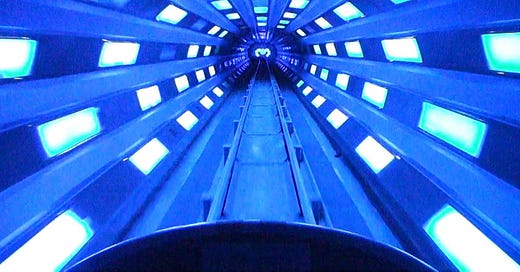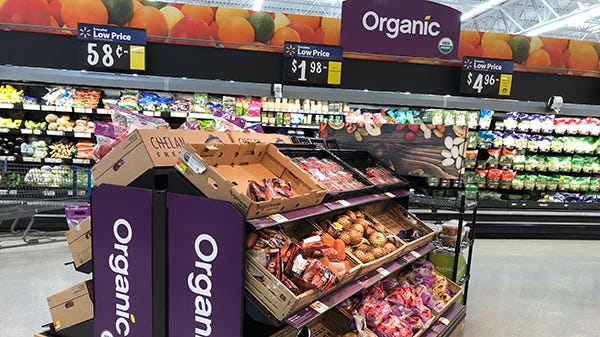The Conventional Channel Fallacy
Why your brand has nothing to fear when it comes to the conventional channel and how avoiding it early might be hurting your business.
I used to be petrified of roller coasters when I was young. Every time we went to an amusement park, I would tell my parents that this was going to be the visit that I finally pushed through my fears and joined the fun.
I remember one fateful trip to Disneyland where my dad and I waited in line for over two hours to ride Space Mountain. As we approached the end of the line and our turn was coming up, I spotted one last final exit. It was at that point that I turned to my dad and let him know I wasn’t going to be able to go on. I was just too scared.
No amount of Mickey Mouse shaped waffles was going to make up for the frustration I caused my dad that night, but eventually, as I grew up, I persevered. Now as an adult, I love roller-coasters, but damn did that fear rob me of some of my prime roller-coaster riding years.
Sometimes we not only have baseless fears in our personal lives but in our work life as well. Since starting WeStock I have done over 1,500 brand demos where I walk brands through our product and sell them on the platform, but first I ask them all the same question…
What is your retail strategy?
The answer rarely varies, especially for emerging brands (Under $1M in sales), and usually goes something like this:
“We want to really focus on the natural and specialty channel because we know that is where our customer shops, then maybe in the future we can expand into the conventional channel.”
There is nothing wrong with this strategy, but it is just one strategy and not the strategy. It does make me think though if so many brands are trying to replicate the same playbook, wouldn’t more brands be better served going into the conventional channel earlier?
Unfortunately, brands make a few critical assumptions that are usually just wrong when it comes to the conventional channel which leads to this deep-rooted fear of the channel altogether. Let’s go through those brand assumptions and why they might be misplaced.
The first is that your product is so different, healthy, or functional that only shoppers who go primarily to Whole Foods, Sprouts, or your local natural market will be able to comprehend why they need to add this product to their cart.
Taking out the fact that this assumption is a bit condescending to a majority of U.S shoppers, if we simply look at the data it quickly disproves this idea. Over 76% of shoppers go to multiple retailers for their weekly shopping, so it is most likely that the same Whole Foods or Sprouts customers you are focused on are also Target…or even a (gasp!) Walmart shoppers.
Then when you realize that in fact Walmart, Costco, and Kroger are the top three largest organic retailers with Whole Foods not showing up on the list until the #6 spot, you can start to understand that you might be limiting the scope of your retail focus.
Simply put, shoppers are more educated than ever, and just because a shopper prefers a conventional, club, or big-box retailer does not mean they don’t fall into your ideal customer persona.
The next assumption made by most brands is that since their ideal customer is in the natural channel that it will somehow be less expensive for them to succeed in this space.
Unfortunately, free fills and slotting fees are felt in all channels and are not exclusive to the conventional channel. Retailers like Walmart and Costco sometimes forego these charges, with the expectation that they are going to get a bigger discount that they can then pass down to their shoppers.
In both channels, you are going to have to reserve 12-20% for your trade spend budget to ensure your product is moving. The biggest difference is that the conventional channel will justify this cost much quicker due to the volume of sales.
The volume you need to hit profitability in retail is an uphill battle no matter the channel, but many brands stand a better chance of hitting this point in conventional retailers given the size of the customer base.
“This is all well and good, but I simply don’t have the capacity or capital to support a large conventional chain”
I fully understand if your brand is not able to support a 1000+ chain and you can’t move into the conventional channel yet. But, if you are in 500 stores and those stores are spread out across multiple accounts being serviced by a few different DSDs and maybe even some accounts that are ordering direct or from third-party platforms, the volume is not going to justify the costs associated with managing those accounts.
This is not an industry where you want to spread yourself out. A brand that is in 500 stores with just one account versus 500 stores through 100+ different accounts is going to generate more revenue, hit profitability faster, and maintain its sanity for longer.
The last point I want to touch on is distribution.
Many emerging brands in the first few years look at distribution as a win when it’s not. Great, you are in UNFI, KeHE, and a local DSD, but do you actually have enough points of distribution to support those distributors. Because if you don’t the fees are going to pile up and you are going to get hit with an email that your product is being discarded from their warehouse.
This pain can be slightly alleviated when approaching conventional retailers since most are bringing you straight into their DC or they are making the introduction to a preferred distributor and their business is going to anchor that new distributor for you.
Too many brands fear the conventional channel and their reasoning is based on a popular industry playbook. One that states that we must start online, then test in independent accounts, and then branch out to natural and specialty. And only after all of that can we even think about approaching conventional retailers.
This retail roadmap does work, but if your brand is following the same playbook as most other brands, why do you think you will be the one to succeed and not them?
There are many brands that succeed because they prioritize conventional retailers first. They understand the volume in that channel is their quickest way to profitability and that shoppers are just as likely to discover their product there as they are at an organic local market. They allocate their capital to service and promote 1-2 larger accounts instead of 50+ smaller ones.
This post is not about which strategy is right and which is wrong, it is a challenge for brands to think about moving upstream faster and approaching bigger accounts sooner, understanding that there is no rule that says you can’t start in Walmart and then open Whole Foods.
Say bye to your fears and get in line for the conventional retail ride.





